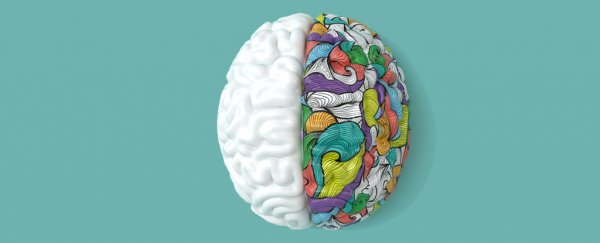Simply being exposed to things we're not familiar with – new objects or species of animals, for example – puts us in learning mode, new research has revealed, and makes us more ready to learn about the new thing later on.
Once we've encountered a new thing, our brains are able to capitalize on a period of brief learning later on to take in more knowledge about it. The new study should help scientists understand this kind of subconscious learning or latent learning.
Much of how we perceive different things in the world has to do with categorizing them, but the ways we learn these categories are often not explicit. For example, we learn that 'cat' and 'dog' are different categories mainly by being exposed to cats and dogs, rather than being sat down and taught the specifics.
In this study, the researchers wanted to find out more about how such incidental exposure contributes to us learning different categories.
"We often observe new things out in the real world without a goal of learning about them," says psychologist Vladimir Sloutsky from Ohio State University.
"But we found that simply being exposed to them makes an impression in our mind and leads us to be ready to learn about them later."
The team ran five different experiments involving a total of 438 adult volunteers. Researchers used a custom computer game to expose the participants to unfamiliar fantastical creatures, which in some cases were split into two categories – categories similar to cats and dogs.
During the initial phase, the participants were instructed to react as quickly as possible to a creature jumping either to a red panel on the left side of the screen, or a blue panel on the right side. Unbeknownst to the participants, the side the creatures jumped to was always the same as their category, and there were a couple of different types of category structures.
While nobody figured out the 'secret' categories in this initial phase, it was clear from the results that people who'd been exposed to the creatures in the initial phase were able to learn the categories faster.
Later in the experiments, there was a period of explicit learning, in which the made-up categories – 'flurps' and 'jalets' – were revealed to those taking part. The teaching also involved explaining how to distinguish between creatures in the two categories (different colored tails and hands, for example).
 Examples of the creatures used for the experiments. (Unger and Sloutsky, Psychol. Sci., 2022)
Examples of the creatures used for the experiments. (Unger and Sloutsky, Psychol. Sci., 2022)
The volunteers exposed to pictures of 'flurps' and 'jalets' in advance were much faster in being able to grasp the differences between the creature categories, even though they weren't exposed to any kind of learning instructions during the initial phase.
"Participants who received early exposure to Category A and B creatures could become familiar with their different distributions of characteristics, such as that creatures with blue tails tended to have brown hands, and creatures with orange tails tended to have green hands," says psychologist Layla Unger from Ohio State University.
"Then when the explicit learning came, it was easier to attach a label to those distributions and form the categories."
In experiment five, the initial phase images were accompanied by one of two sounds assigned at random, and the participants had to respond to the sound rather than the picture – in other words, they didn't need to pay attention to the creature at all.
Those volunteers who glimpsed 'flurps' and 'jalets' during the initial phase with sounds still did better in the learning phase, suggesting that a lot of what was being absorbed was done at a subconscious level. Simple exposure was enough to start learning.
"The exposure to the creatures left participants with some latent knowledge, but they weren't ready to tell the difference between the two categories. They had not learned yet, but they were ready to learn," explains Unger.
Studies of this type of latent learning are rare, and future studies could expand on the current analysis of adults to look at the process in infants and children too.
"It has been very difficult to diagnose when latent learning is occurring," says Sloutsky.
"But this research was able to differentiate between latent learning and what people learn during explicit teaching."
The research has been published in Psychological Science.
